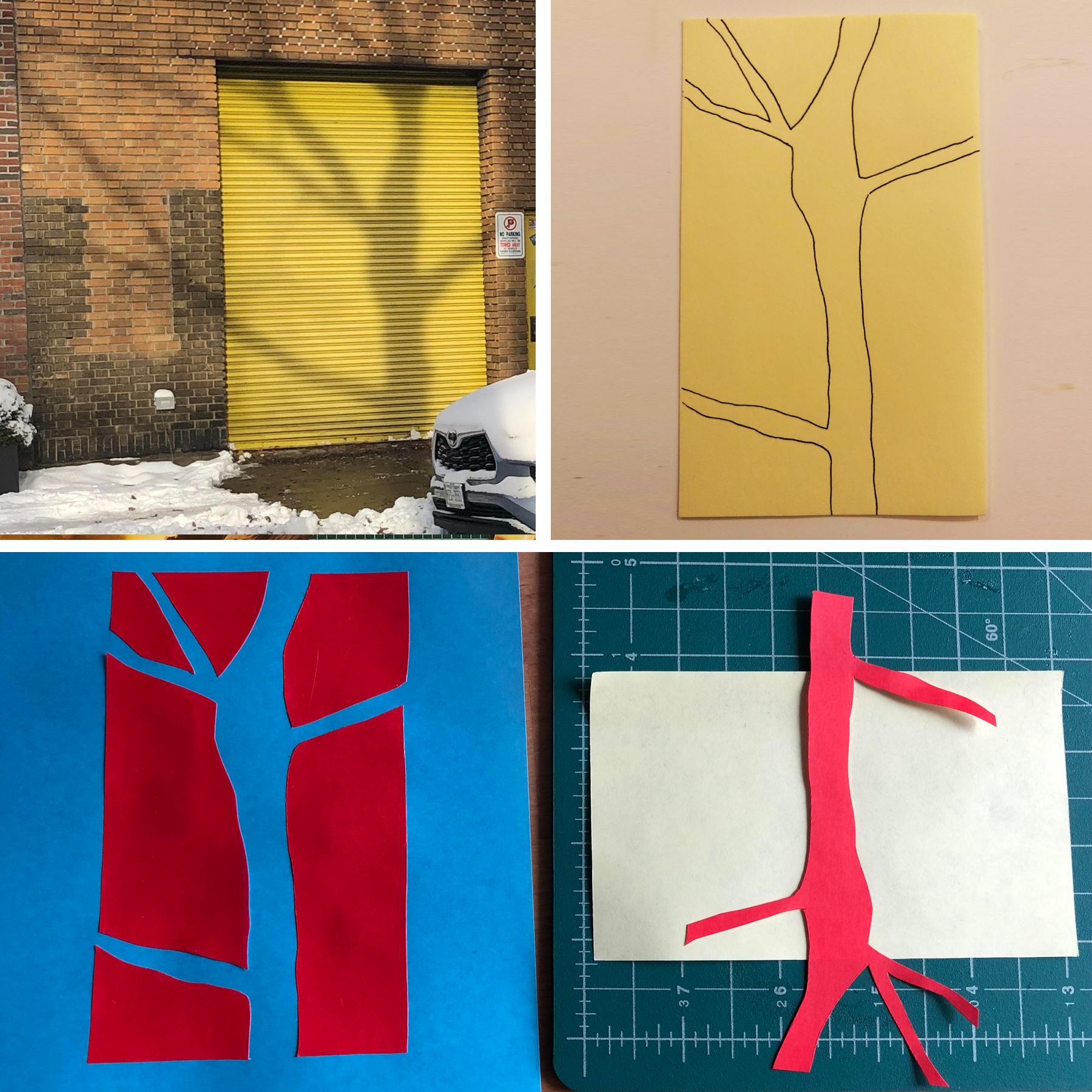#5: Source some Shadows
Groundhogs and vampires aren't the only shadowlovers.
Instructions
Find some shadows, preferably outdoor in the early morning or late afternoon.
Collect the shapes and lines in photo, sketch, or other ways.
Use those shadows for other art.
Image: Some samples of taking shadows and using them for making things.
Image: A simple shadow can become a doodle.
As winter grips the Northeast United States, there are grey days punctuated by moments of intense brightness and long shadows. It’s a great time to go looking for lines!
Our mind has a compulsion to autocomplete, and visually that often means missing a lot of information. Seeing shadows as separate and distinct from their objects is an easy way to see more detail in the world. Shadows can be cast from natural or artificial light—one of my favorite street art pieces in the early 2000s was the work of Ellis Gallagher, who’d chalk thick lines around the shadows of bicycles, lampposts, and just about anything in Brooklyn.
Image: Ellis G. at work. Photo from pulpfactor.com
A more permanent version of that concept in artist Nobuho Nagasawa’s series “Timecast” is carved in the pavement of the Brooklyn waterfront.
Image: Honey Locust shadow in concrete on Columbia Street in Brooklyn
Want some more inspiration? My friend Chiara Bernasconi led a great Art Walk in 2011 (yikes, that was a decade ago?!) that was blogged on the New York Times website. (Sidenote: I remember the interviewer asking whether I’d consider myself an artist, to which I replied, “definitely not.” #lamestreammedia)
Image: Throwing shapes and shadows in Coney Island, 2011
And shadows aren’t just for aesthetics. Eratosthenes, born around 276 B.C.E in what is now Libya, was the chief librarian of the library of Alexandria. He used shadows to calculate the circumference of the planet.
Eratosthenes was fascinated with geography and planned to make a map of the entire world. He realized he needed to know the size of Earth. … (He) had heard from travelers about a well in Syene (now Aswan, Egypt) with an interesting property: at noon on the summer solstice, which occurs about June 21 every year, the sun illuminated the entire bottom of this well, without casting any shadows, indicating that the sun was directly overhead. Eratosthenes then measured the angle of a shadow cast by a stick at noon on the summer solstice in Alexandria, and found it made an angle of about 7.2 degrees, or about 1/50 of a complete circle.
He realized that if he knew the distance from Alexandria to Syene, he could easily calculate the circumference of Earth. … So Eratosthenes hired bematists, professional surveyors trained to walk with equal length steps. They found that Syene lies about 5000 stadia from Alexandria. Eratosthenes then used this to calculate the circumference of the Earth to be about 250,000 stadia. Modern scholars disagree about the length of the stadium used by Eratosthenes. Values between 500 and about 600 feet have been suggested, putting Eratosthenes’ calculated circumference between about 24,000 miles and about 29,000 miles. The Earth is now known to measure about 24,900 miles around the equator, slightly less around the poles.
So whether you’re seeing shadows as fleeting moments of visual interest, or to calculate sophisticated math, get to know the shadows in your world!
***** The bottom part *****
Check us out on Instagram @lookandmakeart — tag this prompt with #lookandmake5
Want to share what you did? YAY! Reply to this email with your name as you want it to appear. Archives of some or all messages will live on lookandmake.art
Have a prompt you want to share? DOUBLE YAY! Email me at lookandmake.art@gmail.com.
You made it to the end. Thank you.




